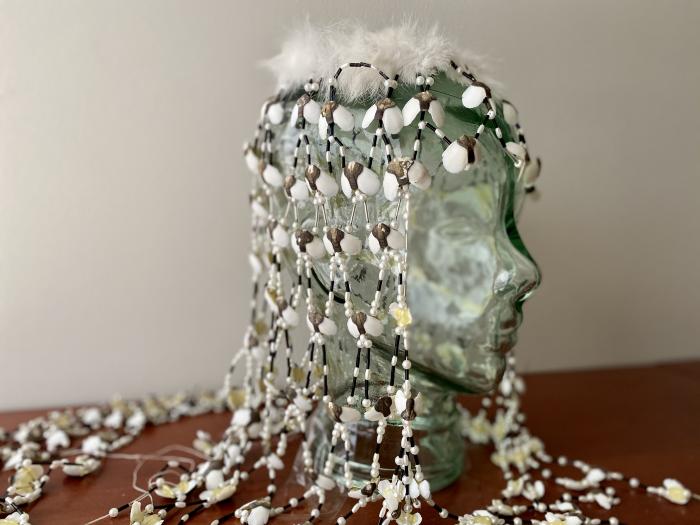Bidarki Headdress
"I've grown up to call them [bidarkis] gumboots. They come from the gumboots that we take these shells off before we eat them. They pick those gumboots off the rocks -- that's what I call them forever. Some of the gumboots are big. Some of them are red. And these ones, when they're out on the rocks they're more blackish. They're tough chewing but they're good." Tom Anderson, Cordova, 2022
"I've made lots of earings from those [bidarki shells]. It's actually very hard to drill a hole through there without breaking them.“ Andy McLaughlin, Chenega, 2022
"That's how they look when they're clean and then we eat them with seal oil. Or gravy them. Or, just you know, just use them as snacks.“Rhoda Moonin, Nanwalek, 2022
This bidarki headdress originates from Qutekcak (Seward). Made of bidarki shells, black and white beads and delicate thread, it is in very fragile condition and in need of expert repair. Headdresses were symbols of wealth and status and typically made of beads and dentalium shells. The more successful hunter was able to trade their pelts for beads, which in turn allowed the women to make longer beaded headdresses.
Headdresses are typically worn by women at dances, feasts and special occassions. Sugpiaq headdresses have dangling pendants on the sides and long tails in the back. Small beads are concentrated near the head while heavier beads can be found further along the tail.
Crowell, Aron L. Amy F. Steffian and Gordon L. Pullar. Looking Both Ways: Heritage and Identity of the Alutiiq People. Fairbanks: Univ. of Alaska Press, 2001. Pg 206
